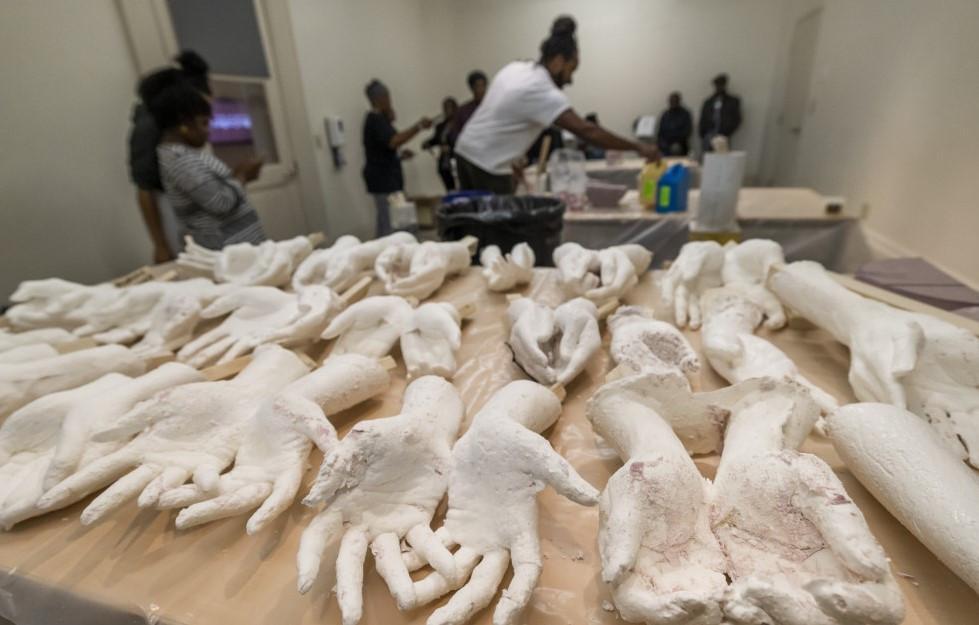
In the 1700s, a boy was born into slavery in Colonial America. He spent his life working in the coastal city of Charleston, South Carolina. And when he died in middle age, he was buried alongside 35 other slaves.
That’s the likely history that researchers have uncovered for the man - there’s no written record for him or the others buried at the long-forgotten site. Their names have been lost, along with any details of their lives. But their stories are now being told through what was left behind: bones, teeth and, especially, DNA.
In recent decades, advances in DNA research have allowed scientists to use ancient remains and peer into the lives of long-dead people. In Charleston, that’s meant tracing some of the African roots that were cut off by slavery.
“We’re bringing their memory back to life,” said Raquel Fleskes, an anthropologist at the University of Connecticut who studied the remains. “This is a way of restoring dignity to individuals that should’ve always had this dignity.”
The Charleston project started a decade ago, when construction workers unearthed the remains beneath the grounds of the Gaillard Center, an arts venue in the city that was going through an expansion.
Dating back to the second half of the 18th century, the remains are believed to be mostly from enslaved people of African descent who lived nearby. A few of them were likely among the estimated 175,000 Africans brought through Charleston’s port, a hub for the trans-Atlantic slave trade.
The city reburied the remains at the site, where a memorial fountain is planned. But with few recorded details available, community members were also interested in using science to learn more about the people, Fleskes said.
So, the Anson Street African Burial Ground Project was born, and researchers started looking for clues.
Artifacts from the site showed that the bodies were buried with care, explained Theodore Schurr, an anthropologist at the University of Pennsylvania who worked on the research. Some of them had beads in their hair or coins over their eyes. Minerals in their teeth showed only a few had been born in Africa, while most had likely been born into slavery in Charleston or nearby.
Scientists also coaxed DNA from the centuries-old skeletons — drilling small samples of bones and teeth, grinding them up into powder, mixing them into a solution and filtering out everything but the human DNA. They were able to get some genetic material for most of the 36 and full genomes for half of them, which were compared with the genetic makeup of people in Africa today.
Researchers also offered DNA tests to 78 African Americans living in the Charleston area today, said La’Sheia Oubré, who led community education for the project. So far, they haven’t found any direct relatives of those buried at Anson Street.
In Charleston, project leaders asked community members for their permission before every step, Oubré said. The names of the 36 had been lost to history and the team gave them new ones — like Coosaw, Welela, Isi and Kuto — so they wouldn’t be just numbers on a burial plot, said Joanna Gilmore, director of research and interpretation with the Anson Street project.
Now, the new memorial is set to honor the lives of these 36 individuals, as well as the thousands of enslaved people who helped build Charleston, project leaders said.
The memorial will be at the Gaillard Center, where a small plaque now marks the site where the remains were uncovered. It will include a fountain circled by pairs of bronze hands cast from current residents, and a base made of soil from other African burial grounds across the city, Gilmore explained.
Last month at an art studio, residents created a copy of their hands, leaning elbow-deep into buckets of pink goo that hardened into molds. Artist Stephen Hayes poured liquid plastic into the molds to make shiny white replicas.
Adrian Swinton got her hands cast to represent a woman given the name Tima. Swinton is descended from slaves herself, and said the memorial was a powerful way to remember their sacrifices.
“Her legacy hasn’t gone unnoticed,” Swinton said. “And she wasn’t property. She was a human. She was part of my Black history.”
Retiree Ervin McDaniel Jr. was giddy as he held up his freshly made plastic hands, which will be cast in bronze to represent the boy born into slavery who was given the name Fumu.
“They lived, they worked, they died and now they’re being remembered forever,” McDaniel said.